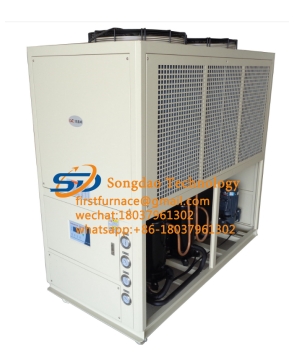- 22
- Nov
Introduce the causes of screw damage and repair methods for screw chillers
Introduce the causes of screw damage and repair methods for screw chillers
1. The screw of the screw chiller rotates in the barrel, and the lubricating oil and compressed gas rub against the screw and the body, causing the working surface of the screw to gradually wear. The matching diameter gap between the screw and the body will increase a little as the two gradually wear. However, since the resistance of the head and the manifold on the front of the machine body has not changed, this increases the leakage flow of the squeezed air forward and reduces the flow rate of the discharge machine.
2. If there are corrosive substances such as acid in the gas, it will accelerate the wear of the screw and body of the screw chiller.
3. When the machine wears abrasives, or metal foreign matter is mixed into the material, the torque of the screw is suddenly increased, and this torque exceeds the strength limit of the screw, causing the screw to twist and break.

When the screw of the screw chiller is damaged, if the damage is not repaired, the screw compressor will be unusable and the machine unusable. If the screw is damaged, it is expensive to replace the compressor, so in general, customers will choose to repair the screw.
1. The twisted screw should be considered according to the actual inner diameter of the machine body, and the outer diameter deviation of the new screw should be given according to the normal clearance of the machine body.
2. After the surface of the thread with the reduced diameter of the worn screw is treated, it is thermally sprayed with wear-resistant alloy, and then processed to size by grinding. This method is generally processed and repaired by a professional spraying factory, and the cost is relatively low.
3. Overlay welding of wear-resistant alloy on the threaded part of the worn screw. According to the degree of screw wear, the wear-resistant alloy with a thickness of 1-2mm is surfacing welded. This wear-resistant alloy is composed of materials such as C, Cr, Vi, Co, W, and B to increase the wear resistance and corrosion resistance of the screw. Grind the screw to size. Due to the high cost of this kind of processing, in addition to the special requirements of the screw, generally rarely used.
4. Hard chromium plating can also be used to repair the screw. Chromium is also a wear-resistant and corrosion-resistant metal, but the hard chromium layer is easier to fall off.
